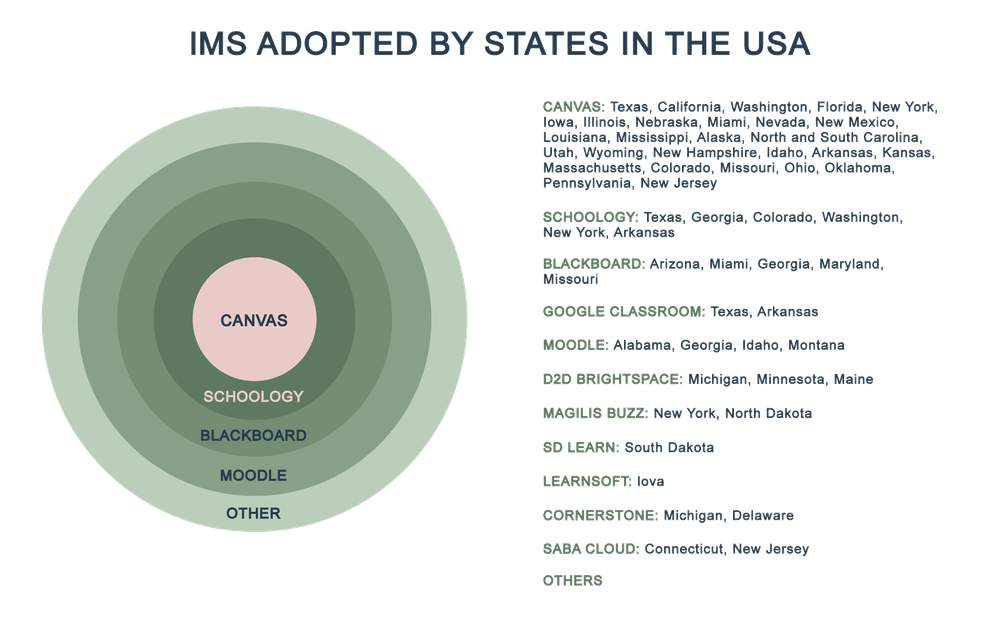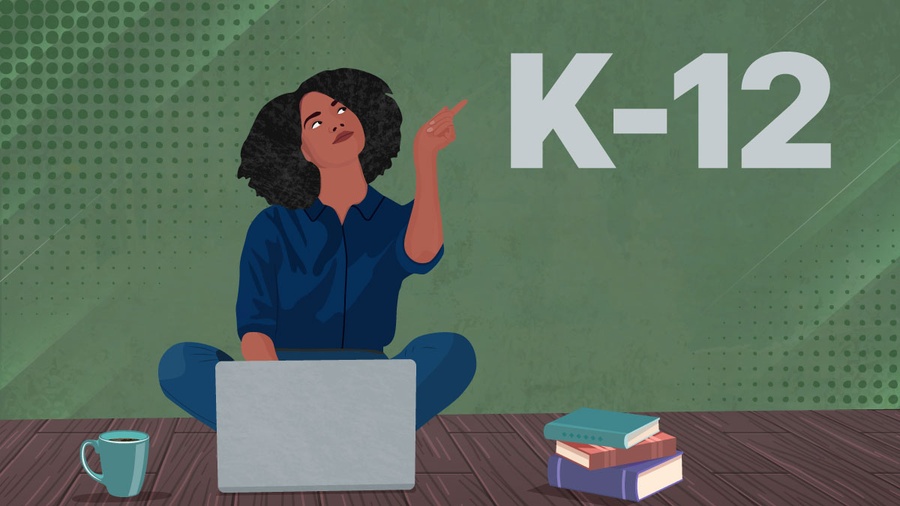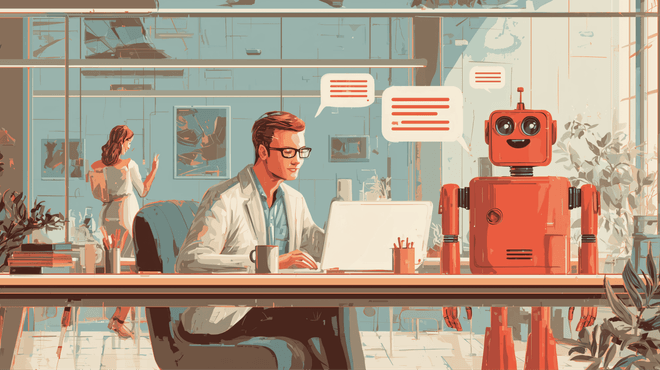We are keen on exploring the world of EdTech and sharing our findings with our readers. In this article, we are going to analyze the K-12 market, gain valuable insights, and explore industry trends.
Intro to K-12
To begin with, K-12 is used as an abbreviation to refer to all primary and secondary education. The K-12 educational system aspires to give students an excellent elementary school education from kindergarten to the 12th grade.
Improvements in access to high-quality education and smart learning are recently driving the K–12 education industry. The adoption of digital technologies and the COVID pandemic have fueled demand for online K–12 education. The convenience and flexibility offered by online learning for K-12 have attracted a large number of students and parents, leading to a surge in market demand.
The integration of interactive learning tools and personalized teaching methods has enhanced the effectiveness of online education. At the same time, government and NGO funds have significantly contributed to market growth.
According to the latest research, the Online K–12 Education Market in the world will account for US$ 119.7 billion in 2022, is estimated to be US$ 631.9 billion by 2032, and is anticipated to register a CAGR of 17.0%. Therefore, the K–12 industry is developing quickly.
K-12 Market in the USA
According to a recent study, the US K-12 Education Market size was estimated at USD 3 Billion in 2021 and is expected to hit around USD 25 Billion by 2030, poised to grow at a compound annual growth rate (CAGR) of 27% from 2022 to 2030.

The growth of the K-12 education industry in the US has been accelerated by the introduction of technology. It allows educational institutions to provide innovative solutions like e-books, interactive content, and accredited online courses.
Increased acceptance of EdTech solutions is gradually shifting their focus from the legacy EdTech education system to online EdTech solutions.
It’s safe to say that digital learning has taken over traditional methods, especially with the pandemic. It’s been on the rise in recent years with the emergence of new tools such as virtual reality (VR), gamification, and LMS/ LXP. By the way, all these tools can be used together, increasing the efficiency of education.
Learning management systems (LMS) are computerized platforms used to organize, deliver, and monitor students’ online learning. This tool is highly efficient in terms of providing education, which is why it has become increasingly popular.
According to the report, the US LMS Market was valued at 4,864 million USD in 2021 and expected to reach 24, 577 million USD in the forecast period (2022-2030).
When it comes to the current state of K-12 education technology in the USA, there has definitely been an increase in adoption rates over the years. We conducted research on LMS, which passed the US adoption process in recent years, for company purposes. Yet, why not share it?
The research is based on available data provided by the Department of Education official website, the official web pages of different states, and state educational establishments only.

Canvas turned out to be the most widely adopted LMS across America. Moreover, there is a tendency to switch to Canvas from other LMSs as it provides the most cutting-edge solutions.
Schoology, Blackboard, Google Classroom, Moodle, and D2D Brightspace also have a large area of adoption and provide competition in the K-12 LMS market.
There are LMS platforms that are still popular in the US, such as Agilis Buzz, SD Learn, LearnSoft, Saba Cloud, and Cornerstone.
Other LMSs appeared to be less popular due to a smaller competitive advantage or being designed for local use, such as Lalima, BrainHoney, SumTotal, and many others.
The extensive government initiatives for the growth of LMS platforms, the rising popularity of digital learning, the trend toward bring-your-own-device policies, and the development of artificial intelligence (AI) and machine learning (ML) in LMS are just a few of the factors driving the LMS market forward.
These factors have created a favorable environment for the growth of the LMS market, with more organizations and educational institutions recognizing the benefits of implementing LMS platforms.
Moreover, the integration of AI and ML technologies in LMS has enhanced personalized learning experiences and improved the overall efficiency of learning management systems.
Trends in the K-12 Industry
Alternative Teaching Methodologies
Blended learning approaches combine online and traditional classroom instruction, providing students with the opportunity to learn at their own pace while still benefiting from the guidance of a teacher. This approach blends the best of both worlds – technology and face-to-face interaction.
Additionally, project-based and experiential learning prioritize hands-on experiences over textbooks and lectures. By engaging in real-world projects, students can apply their knowledge and develop critical thinking skills.
And finally, there is gamification in the classroom. Leveling up teaching by incorporating elements of gaming into the learning process. Who knew learning could be so entertaining? By incorporating game-like features such as rewards, challenges, and leaderboards, teachers are able to engage and motivate students in a whole new way.
Increasing Technology Integration
Artificial intelligence (AI) and machine learning (ML) are highly beneficial for education as they assist educators in customizing the learning experience for each student.
These technologies act as intelligent aides that identify the individual strengths and weaknesses of students and design course material accordingly. This significantly reduces the chances of students getting distracted in class and improves their focus on the subject.
Similarly, virtual and augmented realities (AR/VR) offer students the opportunity to experience field trips beyond their imagination. They can explore historical sites, dive deep into the ocean, or even make a trip to outer space right from their classroom. Additionally, augmented reality enables interactive learning experiences that replace the monotony of traditional textbooks and bring the subject to life.
Blockchain technology is also finding its way into education. This decentralized and secure system has the potential to streamline administrative processes, such as verifying credentials and managing student records. By eliminating intermediaries and enhancing data security, blockchain technology can make educational transactions more transparent and efficient.
Moreover, there is cloud computing. This technology allows for seamless storage, access, and collaboration of educational resources and data. With cloud-based platforms, students and teachers can work together on projects, access materials from anywhere, and benefit from the convenience and flexibility of online learning.
In addition to these advancements, adaptive learning platforms are gaining popularity. By using data analysis, these platforms track students’ progress and provide personalized learning content designed to help them improve their skills and knowledge.
Role of Teachers
While the integration of technology in education is seen as a positive development, it also presents challenges. Schools need to ensure equitable access to technology for all students, address issues related to digital literacy, and effectively integrate technology into teaching and learning practices.
What’s more, the rapid pace of technological advancements can make it difficult for educators to keep up and effectively leverage these tools. With the development of AI, there is a fear among educators that their jobs will no longer be needed.
However, The McKinsey Global Institute’s 2018 report on the future of work suggests that, despite the dire predictions, teachers are not going away any time soon. In fact, they estimate the number of school teachers will grow by 5 to 24 percent in the United States between 2016 and 2030.
The research also suggests that 20 to 40 percent of current teacher hours are spent on activities that could be automated using existing technology.
Technology, when used correctly, can improve teaching, but not replace teachers. The areas with the biggest potential for automation are preparation, administration, evaluation, and feedback, which will make teachers’ tedious tasks easier, so that they can unleash their creativity.
Conclusion
Emerging technologies in education are revolutionizing the way we teach and learn. From high-tech gadgets to innovative software, these advancements are transforming the educational landscape. As technology continues to advance, we can expect even more exciting developments in the field of education and huge growth in the K-12 market.




